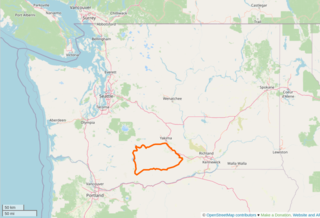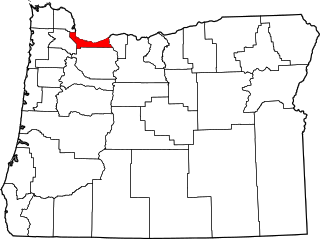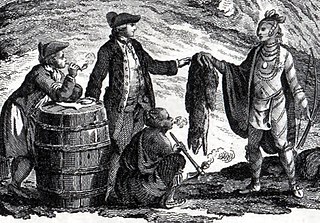Related Research Articles
The illegal drug trade, drug trafficking, or narcotrafficking is a global black market dedicated to the cultivation, manufacture, distribution and sale of prohibited drugs. Most jurisdictions prohibit trade, except under license, of many types of drugs through the use of drug prohibition laws. The think tank Global Financial Integrity's Transnational Crime and the Developing World report estimates the size of the global illicit drug market between US$426 and US$652 billion in 2014 alone. With a world GDP of US$78 trillion in the same year, the illegal drug trade may be estimated as nearly 1% of total global trade. Consumption of illegal drugs is widespread globally, and it remains very difficult for local authorities to reduce the rates of drug consumption.

The Pine Ridge Indian Reservation, also called Pine Ridge Agency, is an Oglala Lakota Indian reservation located in the U.S. state of South Dakota, with a small portion of it extending into Nebraska. Originally included within the territory of the Great Sioux Reservation, Pine Ridge was created by the Act of March 2, 1889, 25 Stat. 888. in the southwest corner of South Dakota on the Nebraska border. It consists of 3,468.85 sq mi (8,984 km2) of land area and is one of the largest reservations in the United States.

The Yakama Indian Reservation is a Native American reservation in Washington state of the federally recognized tribe known as the Confederated Tribes and Bands of the Yakama Nation. The tribe is made up of Klikitat, Palus, Wallawalla, Wenatchi, Wishram, and Yakama peoples.

An American Indian reservation is an area of land held and governed by a U.S. federal government-recognized Native American tribal nation, whose government is autonomous, subject to regulations passed by the United States Congress and administered by the United States Bureau of Indian Affairs, and not to the U.S. state government in which it is located. Some of the country's 574 federally recognized tribes govern more than one of the 326 Indian reservations in the United States, while some share reservations, and others have no reservation at all. Historical piecemeal land allocations under the Dawes Act facilitated sales to non–Native Americans, resulting in some reservations becoming severely fragmented, with pieces of tribal and privately held land being treated as separate enclaves. This intersection of private and public real estate creates significant administrative, political, and legal difficulties.

The Wind River Indian Reservation, in the west-central portion of the U.S. state of Wyoming, is shared by two Native American tribes, the Eastern Shoshone and the Northern Arapaho. Roughly 60 mi (97 km) east to west by 50 mi (80 km) north to south, the Indian reservation is located in the Wind River Basin, and includes portions of the Wind River Range, Owl Creek Mountains, and Absaroka Range.

The Major Crimes Act is a law passed by the United States Congress in 1885 as the final section of the Indian Appropriations Act of that year. The law places certain crimes under federal jurisdiction if they are committed by a Native American in Native territory. The law follows the 1817 General Crimes Act, which extended federal jurisdiction to crimes committed in Native territory but did not cover crimes committed by Native Americans against Native Americans. The Major Crimes Act therefore broadened federal jurisdiction in Native territory by extending it to some crimes committed by Native Americans against Native Americans. The Major Crimes Act was passed by Congress in response to the Supreme Court of the United States's ruling in Ex parte Crow Dog that overturned the federal court conviction of Brule Lakota sub-chief Crow Dog for the murder of principal chief Spotted Tail on the Rosebud Indian Reservation.

Modern social statistics of Native Americans serve as defining characteristics of Native American life, and can be compared to the average United States citizens’ social statistics. Areas from their demographics and economy to health standards, drug and alcohol use, and land use and ownership all lead to a better understanding of Native American life. Health standards for Native Americans have notable disparities from that of all United States racial and ethnic groups. They have higher rates of disease, higher death rates, and a lack of medical coverage.

The Bureau of Indian Affairs Police, Office of Justice Services, also known as BIA Police, is the law enforcement arm of the United States Bureau of Indian Affairs. The BIA's official mission is to "uphold the constitutional sovereignty of the Federally recognized Tribes and preserve peace within Indian country". It provides police, investigative, corrections, technical assistance, and court services across the over 567 registered Indian tribes and reservations, especially those lacking their own police force; additionally, it oversees tribal police organizations. BIA services are provided through the Office of Justice Services Division of Law Enforcement.
Ex parte Crow Dog, 109 U.S. 556 (1883), is a landmark decision of the Supreme Court of the United States that followed the death of one member of a Native American tribe at the hands of another on reservation land. Crow Dog was a member of the Brulé band of the Lakota Sioux. On August 5, 1881 he shot and killed Spotted Tail, a Lakota chief; there are different accounts of the background to the killing. The tribal council dealt with the incident according to Sioux tradition, and Crow Dog paid restitution to the dead man's family. However, the U.S. authorities then prosecuted Crow Dog for murder in a federal court. He was found guilty and sentenced to hang.

The Tribal Law and Order Act of 2010 is a law, signed into effect by President Obama, that expands the punitive abilities of tribal courts across the nation. The law allows tribal courts operating in Indian country to increase jail sentences handed down in criminal cases. This was a major step toward improving enforcement and justice in Indian country.

Faces of Meth is a drug prevention project, run by the Multnomah County Sheriff's Office in the U.S. state of Oregon. The project uses mug shots of repeat offenders to demonstrate the harmful and damaging effects of methamphetamine on its users. The idea for Faces of Meth began in 2004, when deputy Bret King of the Corrections Division Classification Unit used mug shots to identify individuals with a history of using methamphetamine. King and his co-workers collected images of people charged with crimes related to methamphetamine addiction to document the change in physical appearance over time due to the use of the drug. The project uses before and after mug shot photos to show the physical deterioration of the user as a result of using methamphetamine. The images were originally used in educational slideshow and video presentations delivered to students in Oregon high schools. This Faces of Meth drug prevention strategy has since become popular across the United States.

Methamphetamine in the United States is regulated under Schedule II of the Controlled Substances Act. It is approved for pharmacological use in the treatment of attention deficit hyperactivity disorder, narcolepsy, and treatment-resistant obesity, but it is primarily used as a recreational drug. In 2012, 16,000 prescriptions for methamphetamine were filled, approximately 1.2 million Americans reported using it in the past year, and 440,000 reported using the drug in the past month.
United States v. John, 437 U.S. 634 (1978), was a case in which the Supreme Court of the United States held that lands designated as a reservation in Mississippi are "Indian country" as defined by statute, although the reservation was established nearly a century after Indian removal and related treaties. The court ruled that, under the Major Crimes Act, the State has no jurisdiction to try a Native American for crimes covered by that act that occurred on reservation land.

Native American reservation inequality underlies a range of societal issues that affect the lives of Native American populations residing on reservations in the United States. About one third of the Native American population, about 700,000 people, lives on an Indian Reservation in the United States. Reservation poverty and other discriminatory factors have led to persisting social inequality on Native American reservations. Disparities between many aspects of life at the national level and at the reservation level, such as quality of education, quality of healthcare, substance use disorders, teenage pregnancy, violence, and suicide rates are significant in demonstrating the inequality of opportunities and situations between reservations and the rest of the country.
Contemporary Native American issues in the United States are topics arising in the late 20th century and early 21st century which affect Native Americans in the United States. Many issues stem from the subjugation of Native Americans in society, including societal discrimination, racism, cultural appropriation through sports mascots, and depictions in art. Native Americans have also been subject to substantial historical and intergenerational trauma that have resulted in significant public health issues like alcohol use disorder and risk of suicide.

Many Native Americans in the United States have been harmed by, or become addicted to, drinking alcohol. Among contemporary Native Americans and Alaska Natives, 11.7% of all deaths are related to alcohol. By comparison, about 5.9% of global deaths are attributable to alcohol consumption. Because of negative stereotypes and biases based on race and social class, generalizations and myths abound around the topic of Native American alcohol misuse.
Amphetamine and methamphetamine are central nervous system stimulants used to treat a variety of conditions. When used recreationally, they are colloquially known as "speed" or sometimes "crank". Amphetamine was first synthesized in 1887 in Germany by Romanian chemist Lazăr Edeleanu, who named it phenylisopropylamine. Around the same time, Japanese organic chemist Nagai Nagayoshi isolated ephedrine from the Chinese ephedra plant and later developed a method for ephedrine synthesis. Methamphetamine was synthesized from ephedrine in 1893 by Nagayoshi. Neither drug had a pharmacological use until 1934, when Smith, Kline & French began selling amphetamine as an inhaler under the trade name Benzedrine for congestion.
From 1969 to 1974, the Richard Nixon administration made important changes to United States policy towards Native Americans through legislation and executive action. President Richard Nixon advocated a reversal of the long-standing policy of "termination" that had characterized relations between the U.S. federal government and American Indians in favor of "self-determination." The Alaska Native Claims Settlement Act restructured indigenous governance in Alaska, creating a unique structure of Native Corporations. Some of the most notable instances of American Indian activism occurred under the Nixon Administration, including the Occupation of Alcatraz and the Occupation of Wounded Knee.

Under Australia's law, methamphetamine is a Schedule 8 drug, available for medical use but restricted in manufacture, supply, and possession. The drug is sought after to give oneself a ‘high’ or a ‘rush’ in their body. Users of this drug often feel senses of exhilaration and arousal as the brain is flooded with monoamines. Methamphetamine has many names not only in Australia, but also around the world. These include chalk, crypto, gear, getgo, tweak, and cristy, although the two most common ones in Australia today are ice and shard. Speed refers to the powder form of the drug, while ice refers to the highly purified, crystalline form. The powder form is often diluted with adulterants including glucose and sucrose.

The drug policy of Missouri involves the policies, measures and laws set by the government of Missouri to control substance distribution and abuse.
References
- ↑ http://www.bia.gov/bia_ojs.html%5B%5D
- ↑ "Meth Adds Scourge to Troubled Native American Lands". Washingtonpost.com. 2007-06-10. Retrieved 2012-08-27.
- ↑ "How Meth Took Hold on Indian Reservation". Washingtonpost.com. 2007-04-29. Retrieved 2012-08-27.
- ↑ Newhouse, Eric (August 23, 1999). "Making reservation 'dry' is no guarantee". Great Falls Tribune. Archived from the original on October 23, 2006. Retrieved March 31, 2014.
- ↑ "Archived copy" (PDF). Archived from the original (PDF) on 2009-10-07. Retrieved 2009-10-14.
{{cite web}}: CS1 maint: archived copy as title (link) - 1 2 "USDOJ: National Drug Intelligence Center". Usdoj.gov. 2012-06-15. Retrieved 2012-08-27.